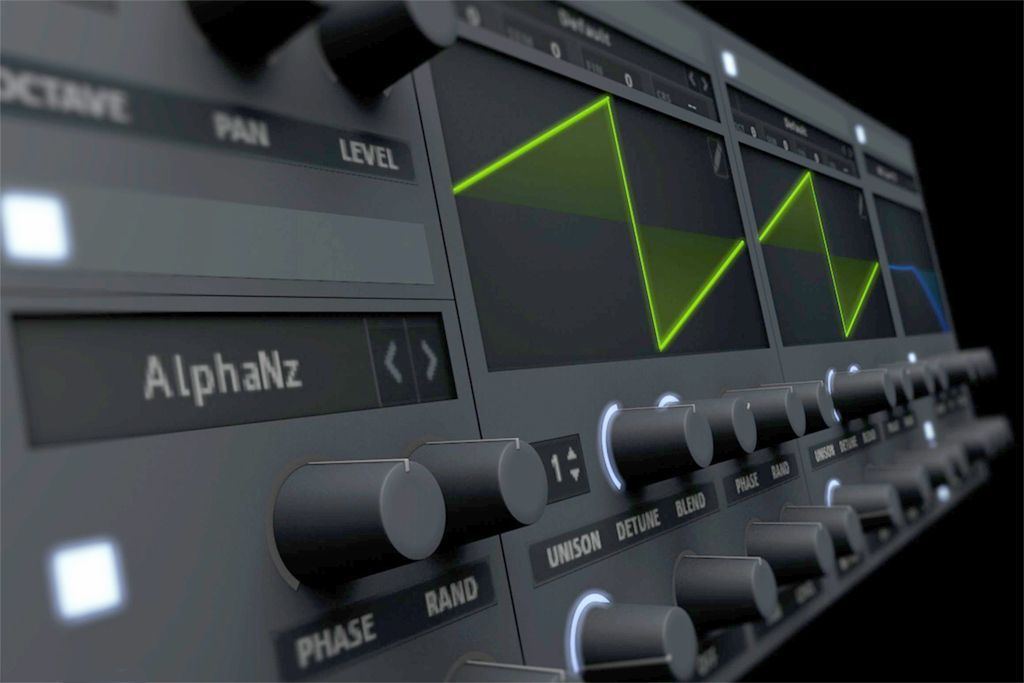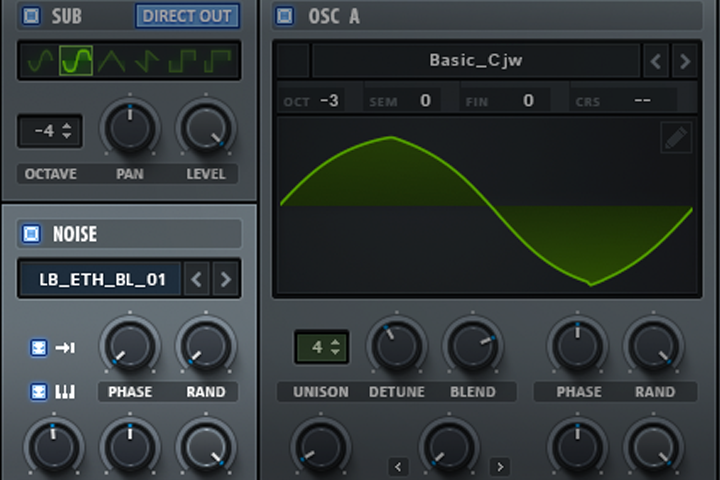Boost your sound design skills with this Xfer Serum tip exploring how to use the Noise Oscillator to transform samples in unique ways.

Xfer Serum Overview
Serum is an incredibly innovative wavetable synthesizer from Xfer Records, creators of the extremely versatile LFO Tool. Former Icon Instructor and Serum’s lead developer Steve Duda has successfully created a ‘dream synthesizer’ that delivers high-quality sound, an immersive feature set, and unmatched sound sculpting possibilities that are all driven by a creative workflow-oriented interface.
Working with Samples
One of Serum’s most marveled features is the ability to import audio directly into the two Wavetable Oscillators and use the advanced options of the Wavetable Editor to manipulate custom wavetables, or you can also simply drop samples into the Noise Oscillator and take advantage of Serum’s impressive features to stimulate new creative ideas.
You can import either single-cycle or complex waveforms and then use Serum’s host of modulating options, real-time wavetable manipulation, advanced filtering, and a suite of effects modules to create truly unique sounds.
Drag and Drop from any sample library You can also drag-and-drop audio files to the noise oscillator, and Serum will embed it in the preset (meaning the noise is not needed if you want to share the preset). Steve Duda
Playing Samples with the Noise Oscillator
Serum’s Noise Oscillator functionality goes beyond playing a typical white-noise sound. It has the capability to playback a variety of samples. The Noise Oscillator is essentially a stereo/mono sample player that offers controls to tune the pitch, adjust the panning, set the ‘sample start,’ and enable keytracking for determining the pitch of each note when playing sounds across your keyboard. For example, you could load a vocal sample and enable keytracking to create a vocal chop lead.
Noise Osc as 4th Oscillator You can also put single-cycle waveforms (which Serum can also export from the WT Editor Export menu) in the Noise OSC and use it like a 4th oscillator. – of course, you’ll want to enable keytracking and disable ‘one-shot’ mode in the Noise Oscillator settings so it plays/loops as you might expect from an oscillator. Steve Duda
Using the Noise Oscillator as a sample player offers many benefits. This approach allows you to add more complexity to your sounds by laying samples loaded in the Noise Oscillator with the Wavetable and Sub Oscillators. In addition, this move gives you access to Serum’s extensive suite of features and effects to transform your sounds further.

How to Import Samples with the Noise Oscillator
Let’s look at how to import and manipulate samples with the Noise Oscillator.
- Easily import a sample by either dragging and dropping it from a folder or your DAWs browser to the Noise Oscillator’s Noise Menu. Alternatively, you can add samples to Serum’s ‘Noises’ folder. Access this folder quickly from Serum’s Main menu by choosing ‘Show Serum Presets Folder.’ Note: When dragging a sample in, the sound data becomes included in the preset (larger preset/song file size, but no file management concerns). However, if you add samples to the ‘Noises’ folder, the sound data is not included in the preset (smaller preset/song file sizes, but the preset/song is dependent on that noise file being present).
- Activate the Keytrack Switch. This control determines whether or not notes changes pitch when played across the keyboard. When disabled, the samples pitch will remain the same across all keys. When enabled, this switch also puts the Pitch knob into a different state and will snap to semitones when adjusted.
- Optional: Enable One-Shot mode if you don’t want the sample to loop. When deactivated, the sample plays indefinitely, looping
start to end. When enabled, the sample stops when playback reaches the end of the sound file. One-Shot mode is useful for attack type sounds, for example, to add a percussive punch/attack transient to a sound. - After loading your sample, adjust the Pitch knob to tune it to the correct pitch. This step is important if you plan on layering the sound with the other oscillators. Note: There is also a fine pitch control for the Noise Oscillator on the Global tab that allows for greater tuning precision if you can’t seem to get your sample in tune.
- Lastly, unleash your creative freedom and go-to-town using Serum’s advanced features to completely transform your sample.
Bass Treatment Example
Listen to how this simple bass sample gets the Serum treatment to create a more exciting sound.
Noise Osc as Mod source Noise oscillator is an often overlooked mod source. You can assign it in the Matrix as a source, or by right-clicking (or ctrl-click in MacOS) on a destination knob and selecting Mod Source->Noise Osc in the pop-up menu. Often I will use the noise osc simply as a modulator this way, by turning the Noise osc volume to 0 so you only hear it’s modulations. If you lower the pitch a lot, it acts more like an LFO where you’re traversing the sample’s waveform slowly. Fun stuff can happen, be sure to try it to OSC course pitch and filter cutoff (for a Filter FM). Steve Duda
Connect with Xfer Records

Turn your passion for music into a Profession: Learn more about our Music School Programs!
MORE ARTICLES FROM THE ICON BLOG

FIND YOUR SOUND, HONE YOUR CRAFT:
Are you ready to turn music into a career? ICON prepares students to become music producers, composers, performers, recording artists, professional DJs, and entrepreneurs in the entertainment industry. Click below to get information about our award-winning programs:

